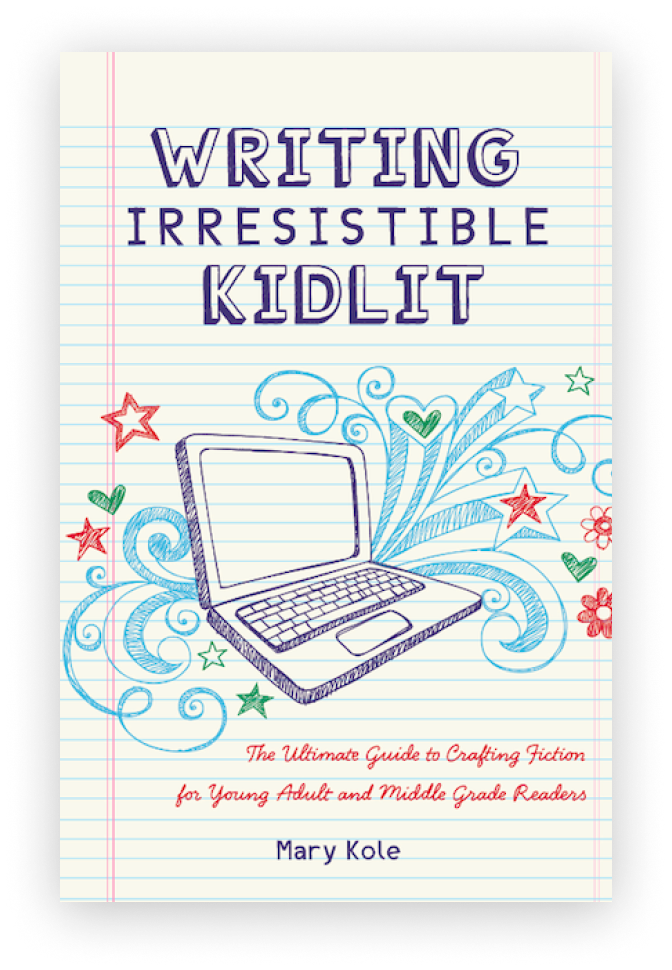The Law of Diminishing Returns
in Writing
By Mary Kole
Mary Kole is a former literary agent, freelance editor, writing teacher, author of Writing Irresistible Kidlit, and IP developer for major publishers, with over a decade in the publishing industry.
As an aspiring writer, you may find yourself struggling to keep your readers engaged throughout the entirety of your plot. You may have noticed that after a certain point, the events, scenes, conflicts, or settings begin to blur together, making the story feel repetitive and dull. This is especially endemic in the novel middle. To overcome the muddy middle phenomenon, we can apply the idea of the law of diminishing returns, as plot repetition can be a significant obstacle to making readers care. But fear not! In this article, we will explore the power of escalation and how it can help you to avoid this predicament.
What is the Law of Diminishing Returns?
The law of diminishing returns is not a writing term. It’s an economics term, that’s explained here: https://en.wikipedia.org/wiki/Diminishing_returns. It means that sometimes, when we invest more into something, the returns plateau or diminish. This same idea—the law of diminishing returns—applies to fiction writing. The key to avoiding your returns (reader engagement) wearing off is to understand the concept of escalating stakes and tension. Each instance of an event, scene, conflict, or story setting should introduce higher stakes than the last, or else your readers will become jaded. This is especially crucial in genres such as fantasy, science-fiction, suspense, and thriller, where the stakes rise and rise until they’re almost irrationally high. What separates one action sequence from the next? You need to think about these things, or your many battle or chase scenes that can quickly become monotonous.
To avoid this numbing phenomenon, try to introduce new elements that escalate the tension and stakes as the story progresses. For example, if your protagonist is on a quest, try to make each subsequent step of the journey more challenging and dangerous than the last. Or, if your novel involves a battle scene, make sure each fight is unique, has a new effect on character development, or changes the plot, with more significant consequences.
Other Techniques for Avoiding the Law of Diminishing Returns Effect
Another way to keep your readers engaged is to introduce new subplots or secondary characters that add complexity to the story. These subplots should complement the main plot, and each new character should have a unique role that contributes something meaningful to the narrative. This approach can also help to make the story feel more cohesive and well-rounded, which can prevent the reader from feeling bored.
It's also essential to pay attention to pacing, which is the perceived speed at which the narrative moves, and structure when trying to avoid tripping over the law of diminishing returns. Introducing new elements too quickly or too late can make the story feel unbalanced or insufficiently developed, as backstory usually belongs before the midpoint, unless you have planned a big reveal around the story climax.
Finally, writers can sidestep the law of diminishing returns by making the events of the story matter, usually by giving characters unique reactions to each event via interiority. This literary device can add depth and complexity to the story, making it more engaging and thought-provoking. For example, if a character is searching for something, you can track their character arc and emotional or psychological development. This approach can also help to prevent the story from becoming overly repetitive, because each plot point has a different effect.
The law of diminishing returns is a common problem that many writers face when trying to keep their readers engaged, because there is scene repetition in a lot of stories. To avoid this phenomenon, writers should focus on escalating the stakes and tension with each subsequent event, scene, conflict, or setting. They should also introduce new subplots and characters that enhance the story's complexity and prevent it from becoming too repetitive. Finally, interiority can add depth and meaning to the narrative, preventing it from falling flat. By following these guidelines, you can create a compelling and engaging story that keeps readers hooked from start to finish, no law of diminishing returns involved.

Click here to purchase Writing Irresistible Kidlit, my book on fiction craft for MG and YA novels, out from Writer's Digest Books. This will show you my writing craft philosophy and give you lots of valuable advice, including tips for the novel revision process and self-editing. There are over 35 example novels cited and discussed throughout. It’s a valuable resource for any writer’s toolkit.
Click here to purchase Irresistible Query Letters, my book on query letters, including over forty examples with comprehensive notes on each one. There’s a ton of submission advice, best practices, and insider information in these pages, and you’ll really enjoy seeing what other writers are doing in the slush.
Click here to purchase Writing Interiority: Crafting Irresistible Characters, my book on interiority and character creation. Explore your protagonist’s thoughts, feelings, reactions and interpretations, expectations, and inner struggles to create a rich, immersive experience. This guide will empower you to create characters who live and breathe on the page, fostering an unbreakable bond with your audience.





